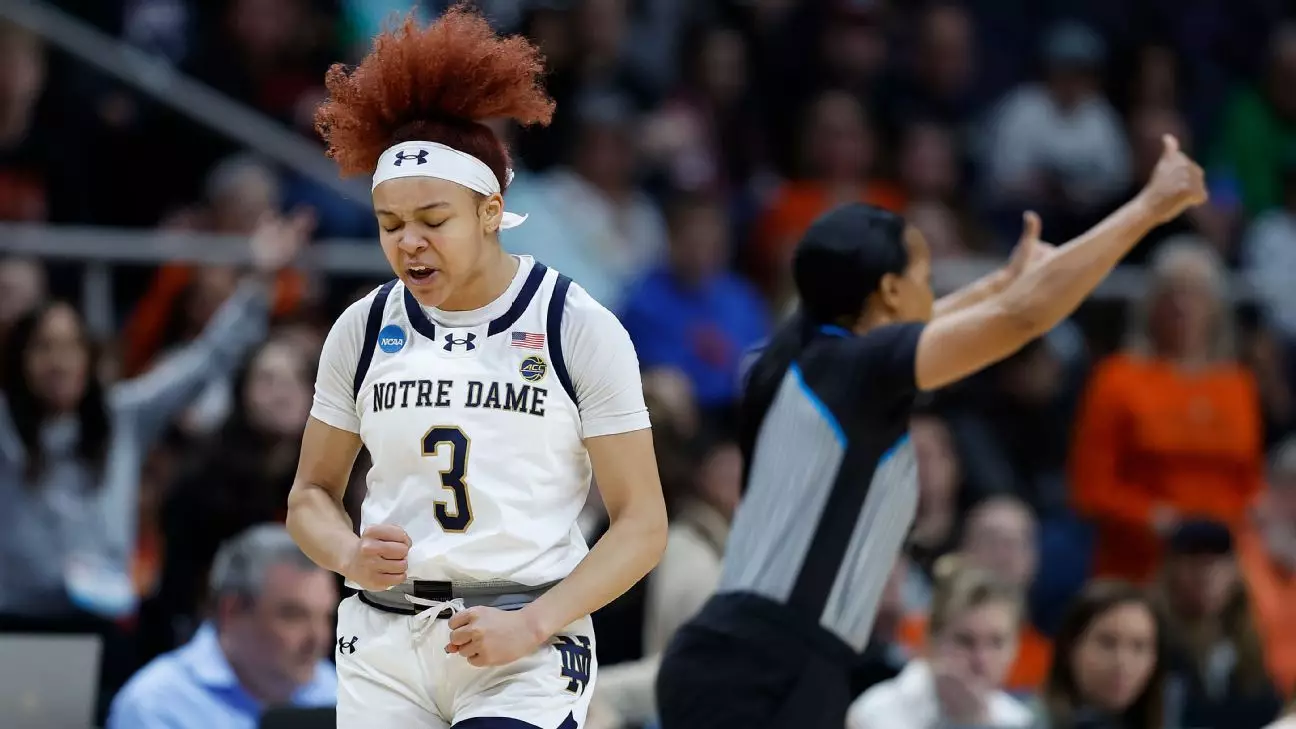Freshman All-American Hannah Hidalgo was shocked when game officials forced her to remove her nose ring in the middle of Notre Dame’s Sweet 16 game against Oregon State. This decision came as a surprise not only to Hidalgo but also to coach Niele Ivey and the rest of the Notre Dame bench. Hidalgo had been playing with her nose ring throughout the entire season, including the first two NCAA tournament games last weekend. Initially, one official told her she could wear the nose ring as long as she covered it up. However, by the end of the first quarter, she was informed that the nose ring had to be removed if she wanted to continue playing.
Hidalgo was forced to sit on the bench for 4:09 of the second quarter as athletic trainers struggled to take out the ring. Unfortunately, the trainers did not know how to remove it, causing Hidalgo’s nose to bleed in the process. She expressed her frustration by stating that she felt it was unfair to have to sit out during a crucial moment in the game. The lack of preparation and explanation from the officials left both Hidalgo and Ivey baffled.
After the game ended, the NCAA released a statement citing Rule 1, Section 25, Article 7, which states that head decorations, headwear, helmets, and jewelry are illegal during games. If a player is found to be wearing jewelry, they must remove it at the first dead ball and cannot return to the game until it is removed. This rule enforcement during the Sweet 16 game was particularly puzzling to Hidalgo and Ivey, considering she had been allowed to wear her nose ring all season without any issues.
The removal of her nose ring seemed to have a negative effect on Hidalgo’s performance in the game. She tied a season low with only 10 points, shooting 4-of-17 from the field. This game also marked the second-lowest field goal percentage of her career, as she missed all seven of her open field goal attempts. When asked about her poor shooting performance, Hidalgo expressed uncertainty about what caused it, whether it was the time spent on the bench or Oregon State’s defensive strategy against her.
On the other side, Oregon State coach Scott Rueck appeared unaware of the reason behind Hidalgo’s absence from the game until he was questioned during his postgame press conference. He attributed his team’s success in disrupting Hidalgo’s shot to their length and defensive discipline, which they have utilized successfully against other top shooters throughout the season. Rueck highlighted the importance of disrupting the flow of the opposing team’s key players to secure a victory.
The unexpected enforcement of the NCAA rule prohibiting jewelry during the Sweet 16 game had a significant impact on Hannah Hidalgo’s performance and left both her and coach Niele Ivey bewildered. Moving forward, it is crucial for players and coaches to be aware of such rules and regulations to avoid any disruptions during important games.


Leave a Reply